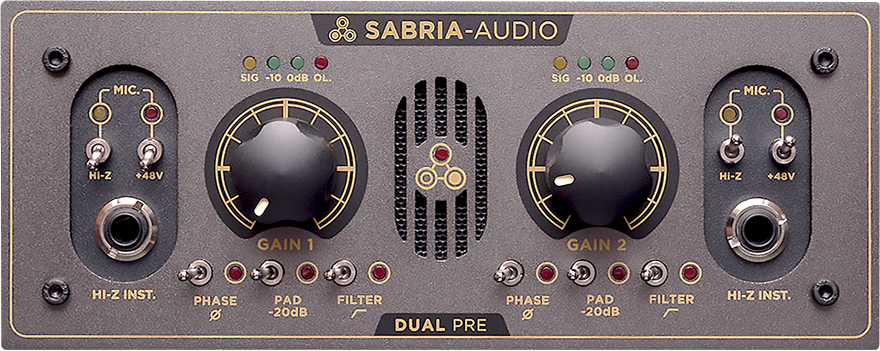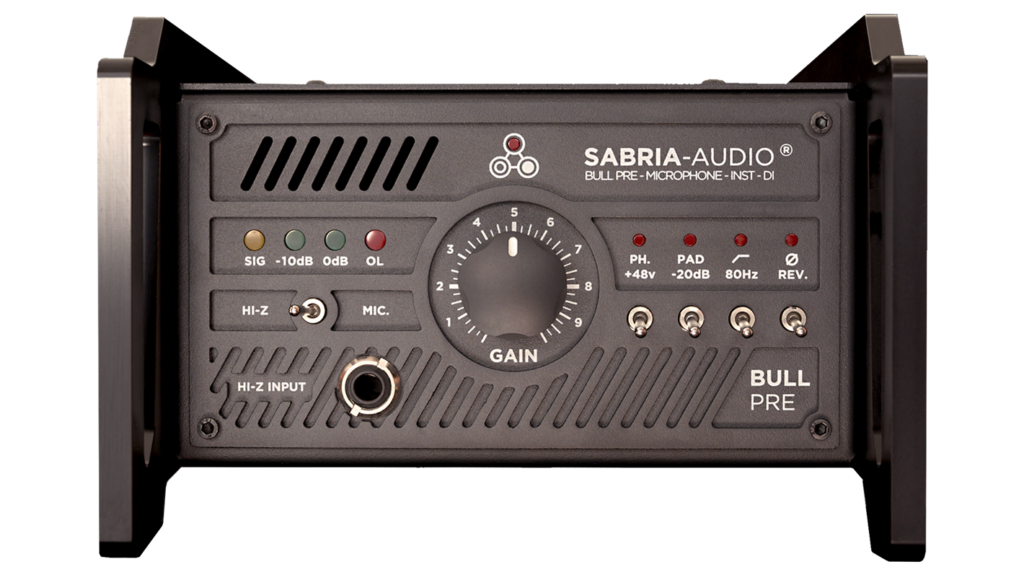Pro-tip #6
Sabria-Audio®
Hi-Z Instruments | Active vs Passive
Technical points & sound choices.
The terms "active" and "passive" when referring to Hi-Z (high-impedance) instruments pertain to the type of electronic circuitry used in the instrument's pickup system. This distinction has implications for the signal strength, tonal characteristics, and overall interaction with the audio system. Let's explore the differences between active and passive Hi-Z instruments.
Passive Hi-Z Instruments
Pickup Design:
Passive Hi-Z instruments, such as traditional electric guitars and basses, use passive pickups. They typically consist of coils of wire wrapped around magnets. The interaction between the vibrating guitar strings and the magnetic field generates an AC voltage signal in the pickup coils. Passive pickups do not require external power to operate.
Output Level:
Passive instruments generally produce a lower output level compared to active instruments. The signal strength depends on the strength of the magnetic field around the pickups and the vibration of the strings.
High-ouptut Impedance:
Passive pickups usually have a higher output impedance compared to active pickups. This higher impedance can interact differently with the input impedance of the following stages in the signal chain.
Tonal Characteristics:
Passive pickups are known for their warm, organic and natural tone. They often provide a more natural representation of the instrument's sound, with a smooth roll-off in the high frequencies.
• While the tonal shaping options may be limited compared to active instruments, some players prefer the straightforward nature of passive tone controls.
Battery-free Operation:
Since passive pickups don't require a power source, instruments with passive pickups do not rely on batteries. This simplicity is advantageous, but it can result in a lower signal level, which may be a consideration in certain performance or recording scenarios.
Dynamic Response:
Passive pickups respond to the dynamics of playing, picking intensity, and volume control adjustments. They are sensitive to the player's touch, making them popular for various music styles.
Active Hi-Z Instruments
Pick-up Designs:
Active Hi-Z instruments, such as some electric guitars and basses, use active pickups. Active pickups include a built-in preamplifier powered by a battery. This preamp boosts the signal generated by the pickup, providing a stronger output.
Output Level:
Active instruments produce a higher output level compared to passive instruments. The preamp allows for more gain, resulting in a stronger signal that is less susceptible to noise over long cable runs.
Output Characteristics:
Active pickups are known for their high output and extended frequency response. They often produce a more "hi-fi" or "modern" sound with increased clarity and a more pronounced high end.
Battery Operation:
Active pickups require a power source, typically provided by a battery. Musicians need to monitor and replace the battery regularly to ensure consistent performance. The battery-powered preamp contributes to the stronger output and often includes tone-shaping options.
Low-Impedance Output:
Active instruments may have a lower output impedance, which can enhance their ability to drive long cable runs without signal degradation. This is especially beneficial in professional audio setups.
Consistent Tone:
Active pickups can provide a more consistent tone across different playing styles and volume levels. The built-in preamp helps maintain a stable signal, and tone controls on the instrument itself or in external preamps allow for further sonic shaping.
Active Tone Control:
Active instruments often feature active tone controls, which may include equalization (EQ) circuits. The preamp allows for more sophisticated tone shaping, including boosting or cutting specific frequency ranges.
Headroom:
The preamp in active instruments provides additional headroom, allowing for cleaner signal reproduction and handling of transient peaks without distortion.
Power Requirements:
Active Hi-Z instruments require a power source, usually provided by a battery. Musicians need to monitor battery life to ensure consistent performance. Some modern active pickups feature low-power consumption designs for extended battery life.
Choosing between active & passive
Understanding the technical differences between active and passive Hi-Z instruments can help musicians and engineers make informed decisions based on their preferences, playing styles, and specific application requirements. Both types of instruments have their strengths, and the choice often depends on individual sonic preferences and the desired characteristics for a given musical context.
Player Preferences:
The choice between active and passive Hi-Z instruments often comes down to personal preference. Some players prefer the traditional, organic sound of passive pickups, while others appreciate the high output and tonal versatility of active pickups.
Musical Style:
The musical genre and playing style can influence the preference for active or passive instruments. For example, passive pickups are often associated with classic rock, blues, and jazz, while active pickups are common in metal, fusion, and genres requiring a more modern sound.
Practical Considerations:
Such as the need for long cable runs, tonal consistency, and ease of maintenance, can also influence the choice between active and passive instruments.
Ultimately, the "better" choice depends on your musical preferences, the sonic characteristics you desire, playing styles, and specific application requirements. Many professional musicians use both active and passive instruments in different contexts, and it's not uncommon for players to have a preference for one type over the other based on the specific requirements of a given performance or recording situation. Both types of instruments have their strengths, It's often beneficial to try the two ones and determine which suits your playing style and musical goals best. The choice often depends on individual sonic preferences and the desired characteristics for a given musical context.
On the Sabria-Audio® main preamps range, the loading impedance is obviously adapted to all types of Hi-Z instruments, active or passive. Whetever with the Source Tube Preamp, Dual Pre or the Bull Pre, you'll can choose literrally your sound.







